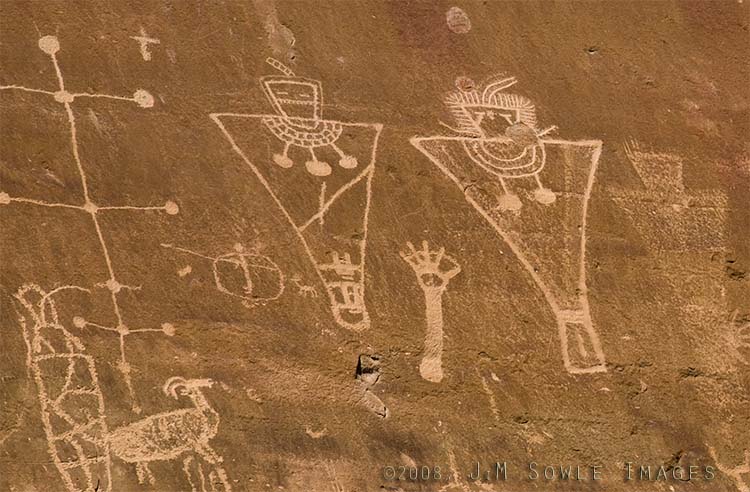|
 |
| This is another section of rock art from Sego Canyon. This section has been vandalized with graffiti and bullet holes. To diminish the efforts of those vandals, I have removed their obvious marks from this image. The information plaque below reads as follows: The Fremont Culture thrived from about A.D. 600 to A.D. 1250, and was contemporary with the Anasazi Culture of the Four Corners area. It is distinguished by its remarkable rock art. Like the Anasazi, the Fremont planted corn and lived in pithouses and surface stone structures. They constructed a distinctive basketry and made pottery. They had a complex social structure, as is illustrated in their rock art, and were highly adaptive to the extremes of their environment. At the top of the panel are the oldest figures. These are the line of large red-painted figures with the rectangular bodies and small-heads, which are similar to the Anasazi Basketmaker style. Superimposed on the older, painted figures is a line of carved (pecked) human figures. Typically, these have trapezoids for the head and body. The most recent Fremont period is also represented by superimposed carvings. They are the deeply grooved outlines of two life-sized human figures with collars and waistbands, and the associated mountain sheep and abstract elements. This last group is representative of the Classic Fremont Style. |
| Camera: NIKON D200 | Date: 9/5/08 1:00 PM | ISO: 200 | Exp. Time: 1/350s | Aperture: 10.0 | Focal Length: 100.0mm |
| Total images: 60 | Last update: 10/4/08 2:49 PM | Email Mike | Email Hali | Help |